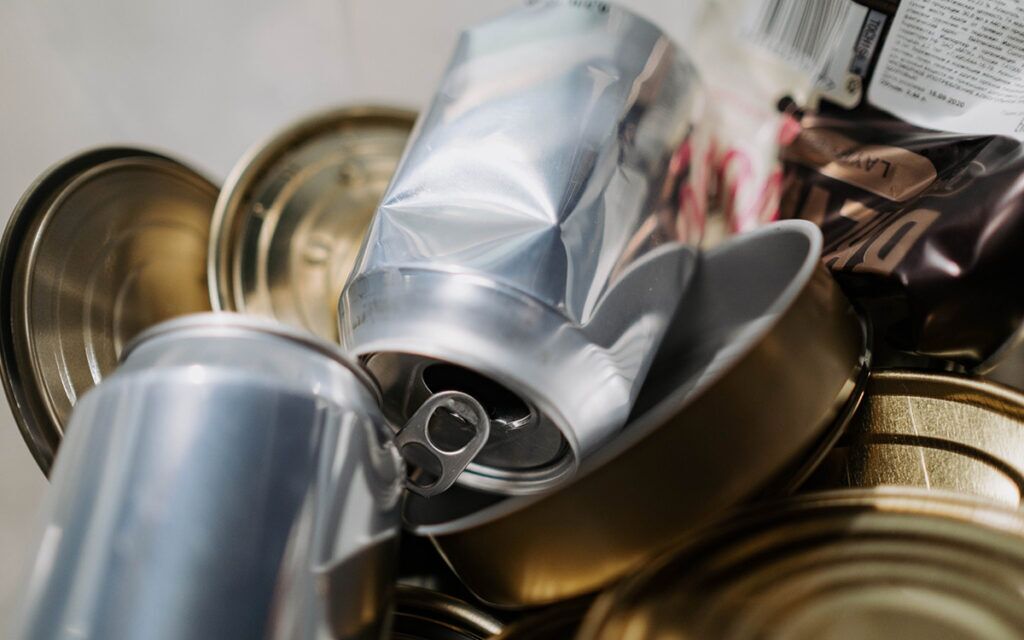Whether it’s mixed stream municipal recycling or construction and demolition waste, there are always valuable materials to be recovered. For non-ferrous metals, such as copper, aluminum and brass, an eddy current separator is the best option. Dings co. Magnetic Group manufactures two different types and three model series of eddy current separators, one eccentric and two concentric. The one that’s best for your application depends on several factors. What type of product stream do you process? How much throughput are you trying to separate? What operational features are most important to you? We’ll look into some of these below.

Eddy Current Separator Operation
The key component of the eddy current separator is the magnetic rotor, which has a series of permanent rare earth magnets mounted on a support plate attached to a shaft. The magnetic rotor is surrounded by a wear shell which supports the conveyor belt. This allows the rotor to spin independently and at a much higher speed than the wear shell and belt around it.
When a piece of non-ferrous metal (such as aluminum) passes over the separator, the magnets inside the rotor rotate past the aluminum at high speed. This forms eddy currents in the aluminum which, in turn, creates a magnetic field around the piece of aluminum. The polarity of that magnetic field is the same as the rotating magnet, causing the aluminum to be repelled away from the magnet. This repulsion makes the trajectory of the aluminum greater than that of the nonmetallic material, allowing the two material streams to be separated. An optional splitter is often used at this point to ensure that the that the two material streams are properly separated.
Eddy Current Separator Models
9100 Concentric Eddy Current Separator
The 9100 model eddy current separator is best suited for fractional sized non-ferrous metal up to aluminum cans in a light to medium volume throughput. The 9100 is used in similar application to the 9900 eccentric eddy current but doesn’t have some of the features unique to the eccentric model. The 9100 however can be up to 25% less expensive as a tradeoff. The 9100 model has a magnetic pulley with a diameter of 7 inches and an internal rotor 6.5 inches across. It is offered in belt widths up to 48 inches.
9500 Concentric Eddy Current Separator
Depth of magnetic field is relative to the size of magnets inside the rotor. For example, the Dings 9500 model concentric eddy current separator has a larger/deeper field than the other eddy current separators Dings makes and is ideal for cans and larger sized non-ferrous in a higher volume throughput. The 9500 is often used in processes like auto shredding. The 9500 model has a magnetic pulley with a diameter of 13 inches with an internal rotor 12 inches across. It is offered in belt widths up to 72 inches.
The Dings concentric design’s magnetic rotor Is protected by a triple layered shell.
- Hard ceramic tile outer coating
- High temp fiberglass outer shell base
- Non-magnetic 304 stainless steel inner shell
Both concentric eddy current models are constructed on a heavy-duty structural steel I-beam frame and support structure. They come standard with oversized, high speed rotor bearings and shaft as well as a heavy-duty drive package. The belt is made of wear-resistant Polyurethane or nitrile material.
9900 Eccentric Eddy Current Separator
The 9900 eccentric eddy current separators’ magnetic field is the same as the 9100 concentric version and is ideal for the same types of applications. However, it’s off center “eccentric” magnet design of the rotor allows ferrous metal that made it past the upstream magnetic separator to be released from the belt as it leaves the magnetic area of the outer rotor shell. This reduces the likelihood that ferrous metal will cling to and damage the belt and shell, extending rotor life. Dings eccentric rotor is further protected by a dual layer shell design.
The Dings eccentric design’s magnetic rotor shell.
- High temp filament wound outer shell
- Non-magnetic 304 stainless steel inner shell
Dings eccentric eddy current separators are constructed on a cantilevered frame with easy to remove supports. The 9900’s built in easy to remove panels give access to bearings and belt. These design features allow the belt to be replaced in less than 15 minutes, shortening maintenance downtime. The 9900 eccentric eddy current model comes with a wear-resistant, endless polyurethane belt with corrugated side walls for material containment. Like the concentric model, the 9900 comes standard with oversized, high speed rotor bearings & shaft. The eccentric eddy current separator has a magnetic pulley with a diameter of 16 inches with an internal rotor 8 inches across. It is offered in belt widths up of 36, 48, or 60 inches.
Dings Company Magnetic Group Helps You Find The Right Magnetic Separation Solutions.
Dings Company Magnetic Group engineering and sales staff work together from our Milwaukee, WI factory to provide outstanding customer service from experts in magnetic separation. We listen to our customers to gain an understanding of their needs and apply our experience in their trade to provide magnetic separation equipment that is sized and positioned for the best possible performance in their specific application. Contact Us at magsales@dingscom or call us at (414)672-7830.
